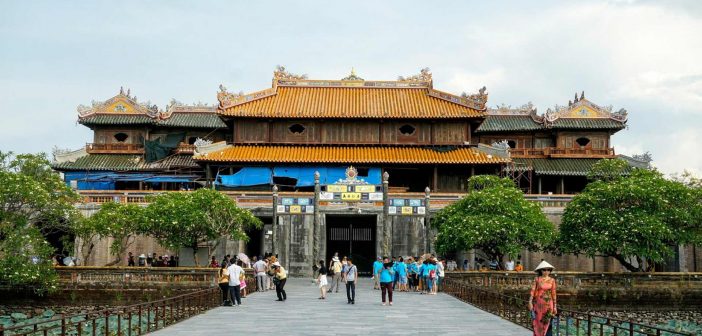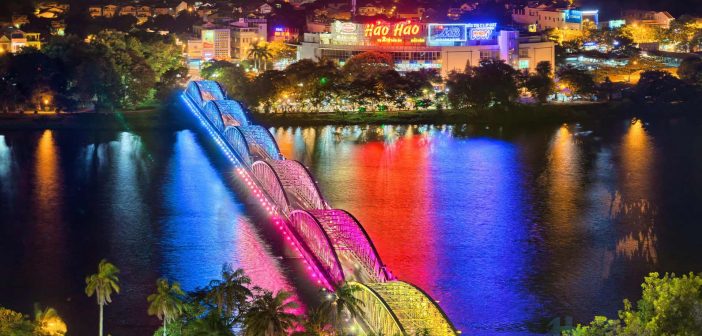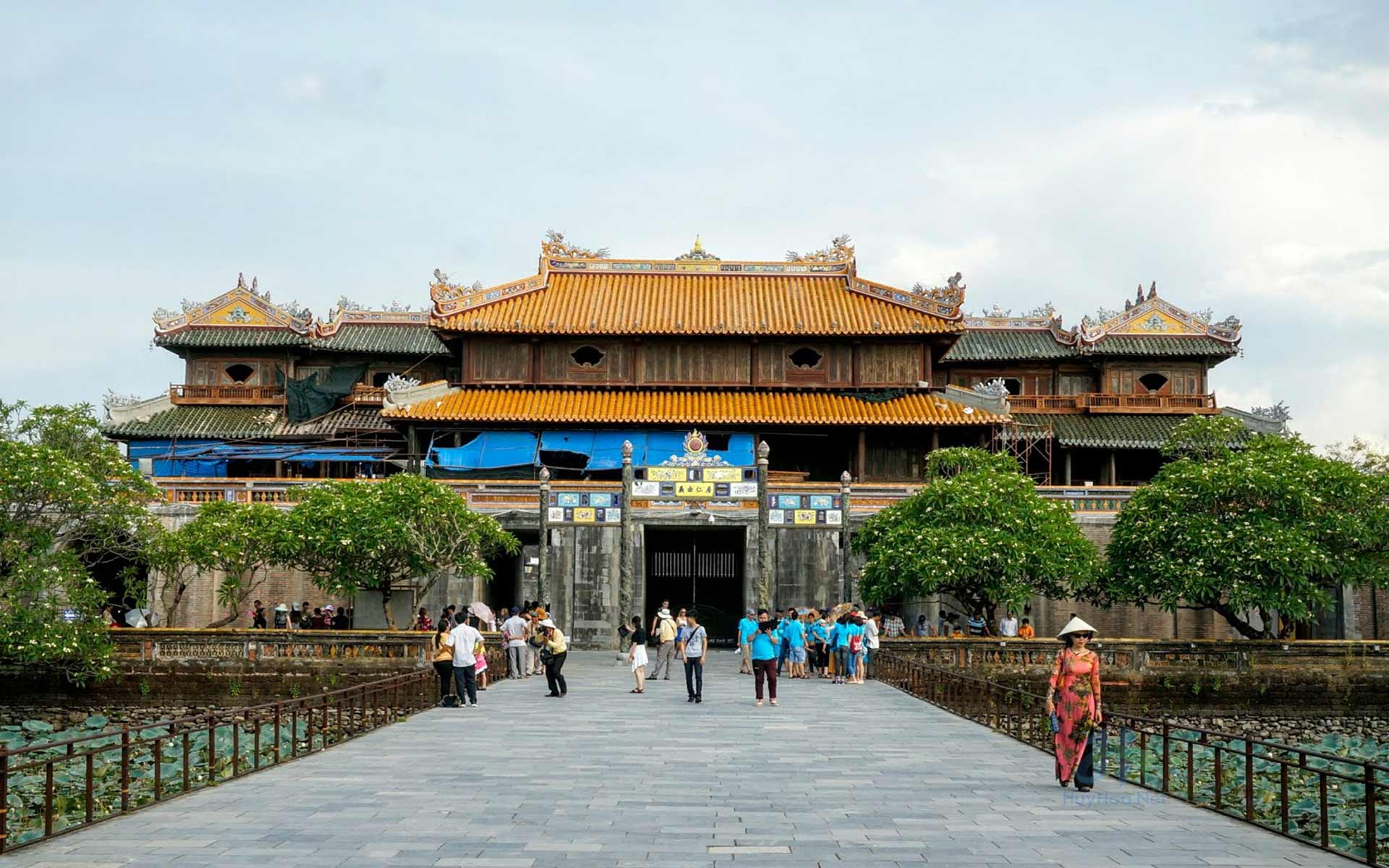Vietnam’s former royal capital, Hue, charms visitors with its festivals, ancient sites and traditional culture.
In 1601, while building Thien Mu pagoda on Ha Khe Hill to “gather heaven’s air and maintain heaven’s veins under the earth”, the First Lord Nguyen Hoang seemed to see a bright future for this beautiful land beside the poetic Huong River.

Three generations later, his grandson, Lord Nguyen Phuc Lan, officially founded the capital of South Vietnam at Kim Long Village, beneath the foot of the hill. That was in 1963, when Hue City was born. Since then, Hue has held a special position in the flow of the nation’s history, from Capital City of South Vietnam, to Capital of the Tay Son Dynasty (1788-1801), Capital of the Nguyen Dynasty (1802-1945), and then the Ancient Capital City of Vietnam.
Having held a central position for centuries, Hue city gathered the cream of the cultures of many regions. Hue has a wealth of both material and spiritual heritage. Its beauty comes from its natural environment, its heritage and its people.
Read more: Things to do in Hue at Night
In 1993, the Ancient Capital Hue became the first World Heritage site in Vietnam to be recognized by UNESCO.
Since then, Hue city has been a pioneer, helping the country in the task of cultural integration with the world. In the 1990s, Hue started cultural cooperation with powerful countries (its main partner is France) to host international festivals modeled on those held in other regions.
Since 2000, Hue has hosted seven international cultural festivals endorsed by the Government and honored by the international community to exchange culture and heritage. Hundreds of performers from all over the world come to Hue. Each Hue festival is also an occasion to showcase the beauty of Hue’s and Vietnam’s culture.
Both royal and community festivals have been revived. They add to the Hue Festival’s allure. Rituals and events such as the Nam Giao Worship Ceremony, Xa Tac Worship, Truyen Lo Ceremony, Honoring the Homeland and Worshipping the Ancestors Ceremony, the Doctor Vo Festival, the Naval Training of the Nguyen Lords, etc attract thousands of visitors.
During the Hue Festival, the palaces, temples, royal tombs and shrines of Hue become even more mysterious and beautiful.

Exhibitions of ancient objects, local handicrafts, kites, arts and cuisine help to promote tourism in and around Hue.
All year round, Hue is full of festivals and heritage. In Lunar January there is the festival to celebrate Quang Trung’s coronation, the Festival of Huyen Tran Princess Temple, the Cau Ngu Festival, the Sinh Village Wrestling Festival, and the Nguyen Tieu Festival. Lunar February brings the Xa Tac Worship Ceremony, the Nam Giao Worship Ceremony, and the Worship of the Land.
In Lunar March there is the Hon Chen Shrine Festival. Lunar April brings the Phat Dan Festival. The biggest event in Lunar May is the Am Hon Worship Ceremony (23rd May). In Lunar July people celebrate the Festival of Hon Chen Shrine and the Vu Lan Ceremony.
In Lunar August there is the Mid-Autumn Festival. Villagers also organize the Autumn Worship Ceremony and celebrate Independence Day. There are boat races on the Huong River. Whenever they visit, tourists will enjoy Hue’s traditional culture.

Perhaps this is why more visitors keep coming to Hue city. Twenty years ago, only a few tens of thousands of visitors came to Hue each year. In recent year, Hue draws two million visitors per year. More international visitor are arriving. Hue city is a key stop on the Central Heritage Path, which connects Quang Nam- Da Nang to Quang Binh. This region is home to five World Heritage Sites.
Two decades after it became a World Heritage Site, Hue city is even more beautiful and charming. Known for its festivals and unique heritage, Hue deserves its reputation as a center for tourism an culture.

